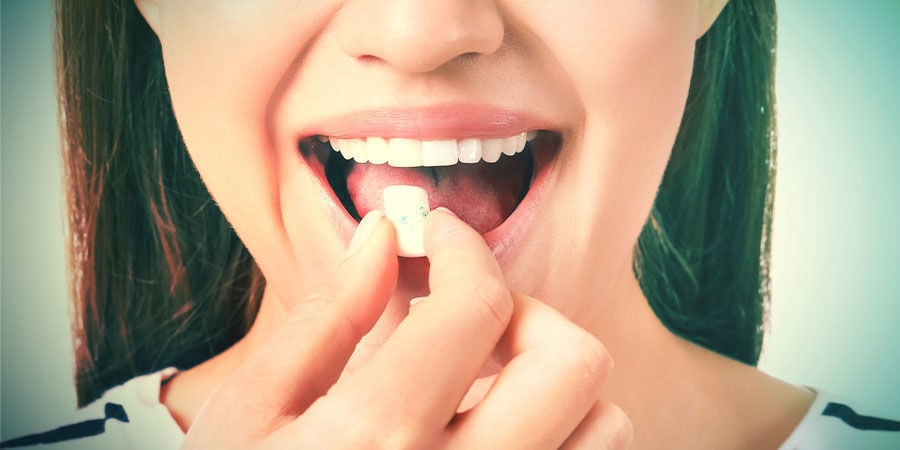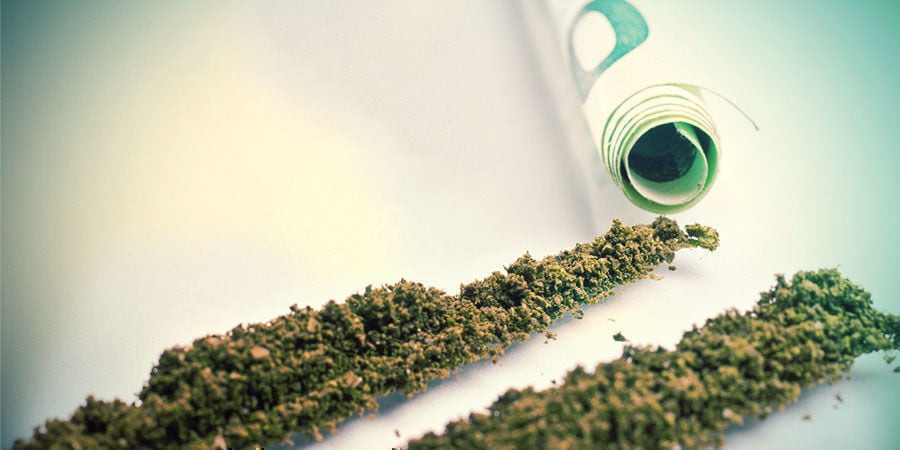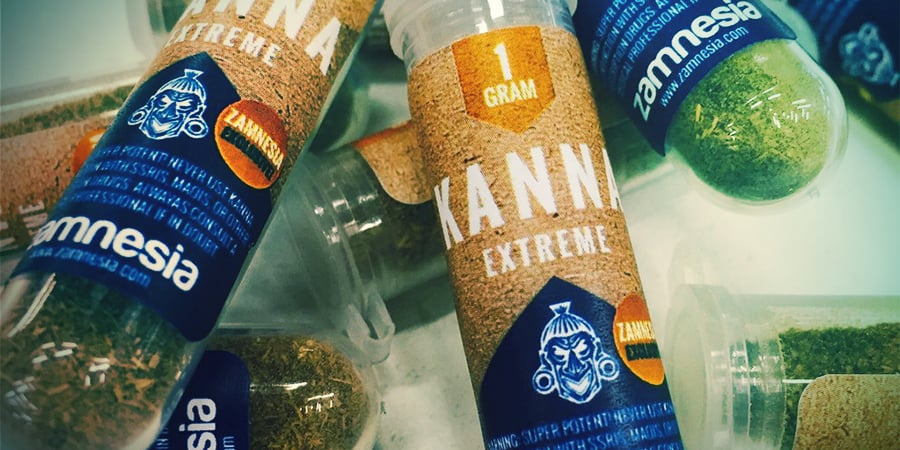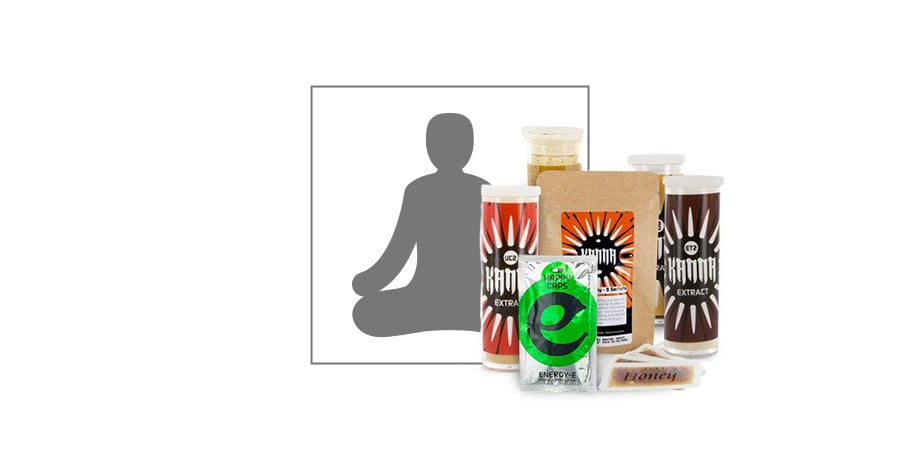What Is The Best Way To Consume Kanna?
Kanna is a mood-altering plant that is found in abundance throughout South Africa. Kanna contains alkaloids that work as serotonin reuptake inhibitors, leading to enhanced moods and euphoric states of mind in users. Here are the different ways to ingest kanna.
Kanna, also known under its Latin name Sceletium tortuosum, is a succulent plant found in abundance throughout South Africa. In other languages the plants name means “chewable things” or “something to chew”, which relates back to the traditional use of the plant.
It is reported that South African hunter-gatherers used kanna as a mood-altering substance during prehistoric periods. Kanna was used in multiple ways and is known to have been chewed, snorted and vaporized in order to achieve the desired effects. The plant has also been made into capsules, teas, and tinctures in order to harness its euphoric attributes.
RECREATIONAL KANNA

Kanna is also widely used recreationally, especially among those in the “psychonaut” community with an affinity for mind-altering plants. While many believe kanna to have hallucinogenic properties, this is at best an exaggeration. It is, however, known to induce a sense of euphoria, making it more than worthy of experimentation.
The pharmacological composition of kanna is rather interesting, with the plant containing around 1.5% alkaloids. One such alkaloid is mesembrine, found within the leaves, stems, and flowers of the plant. Mesembrine acts as a serotonin reuptake inhibitor, a class of compounds well known for assisting with various mental health conditions such as panic disorder, phobias, obsessive compulsive disorder, and generalised anxiety disorder.
Serotonin is a neurotransmitter that is believed to play a part in the regulation of anxiety and mood, and serotonin reuptake inhibitors work by blocking the reuptake of serotonin, making more of the chemical available. Additionally, kanna contains the alkaloid mesembrenone, which also acts as a serotonin reuptake inhibitor.
HOW TO TAKE KANNA
As we have addressed, kanna has a range of uses. Some may be extremely interested in the plant due to its implications as a serotonin reuptake inhibitor. Others may look to kanna as a recreational opportunity worth exploring.
Both groups will be pleased to know that there are many different ways to consume kanna, with different avenues of administration suiting each individual. These can vary in simplicity from chewing on plant matter to preparing tinctures and tonics.
CHEWING KANNA

Chewing on kanna is the traditional method of ingestion. It is extremely simple and easy to do, appealing greatly to those who find fascination in aboriginal methods of consuming mind-altering plants. The historical way of going about this is to chew upon the fermented leaves, stems, and roots of the plant. The saliva is swallowed and the plant matter is spat out in order to be reused later on.
Thankfully, more modern methods of chewing have been developed that make this process much simpler still. One such technique involves mixing some kanna with a piece of chewing gum and swallowing the saliva. The recommended dosage for this method is around 50-150mg in order to produce a subtle effect. If you desire more of a potent effect, you can experiment with dosages of up to 1g of the plant. Dosages between 200-400mg are considered to be the middle ground.
INSUFFLATION

Insufflation is a rather formal way of talking about snorting kanna. Using kanna as a snuff is reported to have a fast onset, therefore a great option for those looking for an immediate effect. Additionally, snorting kanna is also said to be one of the most euphoria-inducing ways of ingesting the substance. These factors are more than likely to appeal to the recreational users and psychonaut types.
Before snorting kanna, plant matter should be ground into an extremely fine powder. The biggest drawback from this method is the physical discomfort within the nose, as well as possible bleeding and blockages.
A mild dose for snorting kanna is reported to be around 50mg. A medium dose ranges from 50-100mg. Strong insufflation doses can be achieved by administering up to 250mg of powder, with extra-strong doses clocking in at 500mg.
SUBLINGUAL USE
Sublingual administration involves placing a substance underneath the tongue. Once in place, the substance enters the body via diffusion into the blood through the tissues within this area. There are various advantages of sublingual administration. For example, it is often much faster as it is a direct route into venous circulation and bypasses the first-pass metabolism in the liver.
Sublingual use of kanna involves placing the plant material underneath the tongue and holding it there. Over time, the alkaloids within the plant matter will start to be absorbed and eventually achieve the desired result. Sublingual dosages are very similar to that of chewing. 50-100mg will provide a subtle effect, 200-400mg will provide the user with a mild outcome, and closer to 1g opens the doorway to more intense experiences.
EXTRACTS AND TINCTURES
Extracts and tinctures are very interesting and flexible ways to administer the substance. Kanna Extreme is a fine example of this, a very potent powder extract that offers a strong and immediate sensation of euphoria.The powder can be vaped, used sublingually, and even snorted.
Kanna Honey is another excellent example. This also contains valerian and offers a mellow and chilled-out state of mind. Kanna Honey can be used in any hot beverage from coffee and tea to hot chocolate.
Kanna 10x Extract is one of the strongest kanna products available and is a great choice when seeking a remedy to boost the mood and relax the mind.
Kanna Extract UB40 is a superb extract in the world of vaping, and offers a hard and potent hit that is far beyond that of normal vape juice.
DRINKING KANNA TEA
Kanna tea is reported to taste similar to green tea, yet slightly unpleasant. Tea is often a refreshing way to consume a substance, and the comfort of sipping away on a warm beverage is rarely paralleled. Kanna tea is more of a toned-down way to enjoy the plant.
The effects are less potent, and more plant matter is needed produce the desired effect. For these reasons, tea may be a good introduction to the effects of kanna. A dose of anywhere between 200-500mg is good for a tea infusion. When looking for more potent effects, dosages of up to 2g can be used. However, such doses have been linked to unwanted side effects like dizziness.
Honey is often used as a natural sweetener to improve the taste of the brew. Also, the effects of kanna tea are reported to be more sedative and less euphoric. For this reason, the tea might be well-suited for those experiencing sleep issues or seeking relaxation.
VAPING KANNA

Vaping kanna introduces its active molecules directly into the bloodstream via the alveoli of the lungs. Simply add some kanna powder to your favourite model of herb vaporizer to feel the fast-acting effects.
When loading your vape chamber, add a foundation layer of another herb—such as hops or lavender—to stop the powder from clogging your device. Sprinkle in the kanna powder and top it off with another layer of your base herb. Around 100mg of powder will provide a light and subtle experience, whereas a dose of 250mg will produce more profound effects.
Set your device to a temperature of 188°C to target the active alkaloids within. Shortly after inhalation, you’ll feel the relaxing and euphoric effects of the herb set in.
Take things slowly—one small drag at a time will help you find your sweet spot. Overdoing things can lead to various side effects, so proceed with caution.
-
 5 min
25 July 2019
The Best Alternatives To Coffee: Natural Ways To Boost Energy
Although it may be hard to believe, not everybody is a fan of coffee. In case you happen to be one of those people, here is a list of perfect alternatives to the famous caffeinated beverage. Some...
5 min
25 July 2019
The Best Alternatives To Coffee: Natural Ways To Boost Energy
Although it may be hard to believe, not everybody is a fan of coffee. In case you happen to be one of those people, here is a list of perfect alternatives to the famous caffeinated beverage. Some...
-
 4 min
31 August 2017
5 Drugs That May Boost Focus, Enhance Concentration And Help...
Tired of sitting down at your work desk only to find your boredom levels increase and your attention drift off into some distant corner of the internet? Well, this list of drugs may be able to help...
4 min
31 August 2017
5 Drugs That May Boost Focus, Enhance Concentration And Help...
Tired of sitting down at your work desk only to find your boredom levels increase and your attention drift off into some distant corner of the internet? Well, this list of drugs may be able to help...
-
 2 min
10 August 2016
How To Make Kanna Tea
Kanna tea is an excellent way to enjoy the sedating effects of this versatile herb. So we have outlined everything you need to know about it, and how to make your own.
2 min
10 August 2016
How To Make Kanna Tea
Kanna tea is an excellent way to enjoy the sedating effects of this versatile herb. So we have outlined everything you need to know about it, and how to make your own.













 United States
United States















